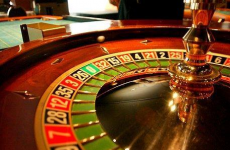
In cognitive psychology, we are thought to make decisions and behave based on our own specific beliefs and perceptions of the situation we are in. While many past theories had considered people to behave based on probabilities of success or failure and our actions were considered quite predictable, the cognitive approach posed that we, as individuals may have differing views about a situation, and so will react to it in different ways. Some psychologists, who adopted this approach soon became interested in the individual mechanisms used by the mind to make these decisions and solve problems, one of whom was Daniel Kahneman.
Kahneman, together with another psychologist, Tversky, looked at various theories of how decisions are made and showed that there is little evidence to suggest that any actual rules of probability or calculations are used when trying to decide on how to behave in a situation. People do not, as would seem sensible calculate risk involved in their actions or the likelihood of different outcomes, but instead tend to base their decisions on one or two specific examples that they have experienced in the past. This is clearly an unreliable measure, but it seems that we as humans tend to base judgements on little more than anecdotal evidence, since we are always trying to make connections between pieces of information, even when these links are non-existent. One way to understand how little we as humans pay attention to real statistical probability is to imagine you are playing at a roulette wheel, where there is a 50/50 chance of a ball landing on a red number or landing on a black number. If the ball has landed on a red number for the last 7 times, which colour would you bet on? Most people would go for the black, because they make the mistaken belief that the ball has to land on a black soon if it hasn’t for that long a time. They would be wrong, since the chance of it landing on a black is still 50/50. Each individual spin starts again as an equal chance and is not linked to the previous spins, but we assume a connection is present because of past experience of the ball landing on both colours relatively frequently.
Kahneman believed that the reason for certain pieces of evidence being used to make decisions while others go ignored is because the sources we focus on are those that come most easily to mind. When we are in a decision-making position, we perhaps do not want to waste time considering realistic outcomes, but instead base our judgements on the first example that we can think of. He noticed a pattern whereby it is often that we underestimate the likelihood of events which are likely to happen such as car crashes, and we overestimate the likelihood of rare events such as plane crashes. This may be partly due to the influence of the media, which tends to report these rare and unique events more often, making them come to mind more easily when in a related situation.
Though this is a natural and innate human behaviour, for those who suffer from anxiety or stress this knowledge could perhaps be useful, since when we are in those situations that lead to irrational thinking, we can stop and consider the actual statistical probability of the events we are afraid of and relax a little more in the knowledge that we have in fact made connections and predictions which are very unlikely to come true.
Image from: http://www.destinationevents.net/wp-content/uploads/553310-555084-close-up-of-roulette-wheel.jpg

0 Comment:
Be the first one to comment on this article.